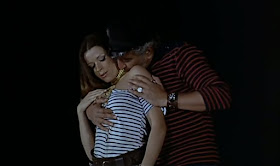This year’s Winter of Discontent has been a blast. We’ve had sex, violence and bad language; hard-nosed crims, seductive women, and a hobo with a shotgun. We’ve had vampires, cannibals and zombies. We’ve had “based on a true story” and “you couldn’t make this shit up”.
But now this third annual festival of filmic feculence is over and I find myself at a crossroads. Although I’m posting this at year’s end, I’m writing it on a spectacularly rainy evening in late November. I’ve spent October and November stockpiling material for the Winter of Discontent. The idea is that, throughout December, the blog will run itself and I’ll be able to concentration on other writing projects.
As regards The Agitation of the Mind in 2013 … well …
There seems to have been a diminution of interest in Agitation during the last year, with demonstrably fewer comments and page views. I’ve been tempted, on more than one occasion, to lock up the store, pull down the shutters and scrawl “CLOSED” in spray-can lettering over the home page. But then I get stuck into something like 13 For Halloween or the Winter of Discontent and I find myself having a good time with it, to the point where it wouldn’t matter if the blog only had one reader and that was my mum – although she’d probably bollock me for the language.
So, stats and comments notwithstanding, I’ll keep Agitation going while I still enjoy writing about film. And right now, I feel the best thing I can do is take a break for a couple of months until I’m suitably enthusiastic about it again.
In the meantime, I’d be happy to open Agitation to contributors. Any form, any style, any length. A list of your favourite movies and why you love them. The first film star you feel rapturously in love with and why they still beguile you. Your memories of movie-going: the picture palaces of your youth, be they arthouse or grindhouse. Or, y’know, just a straightforward review. Emails to slainte[at]inbox[dot]com.
The stage, my friends, is yours.



















































